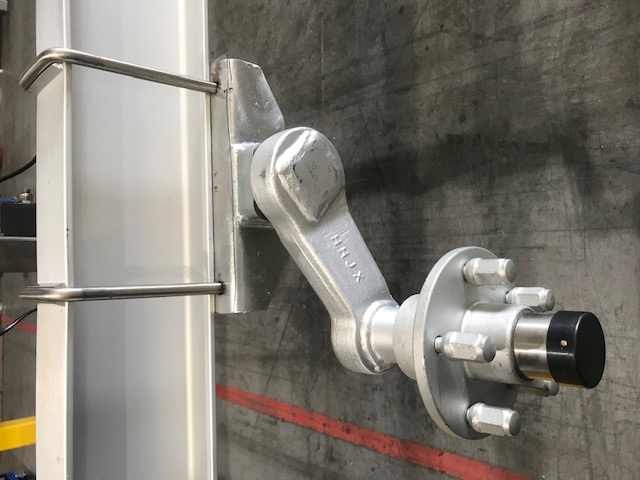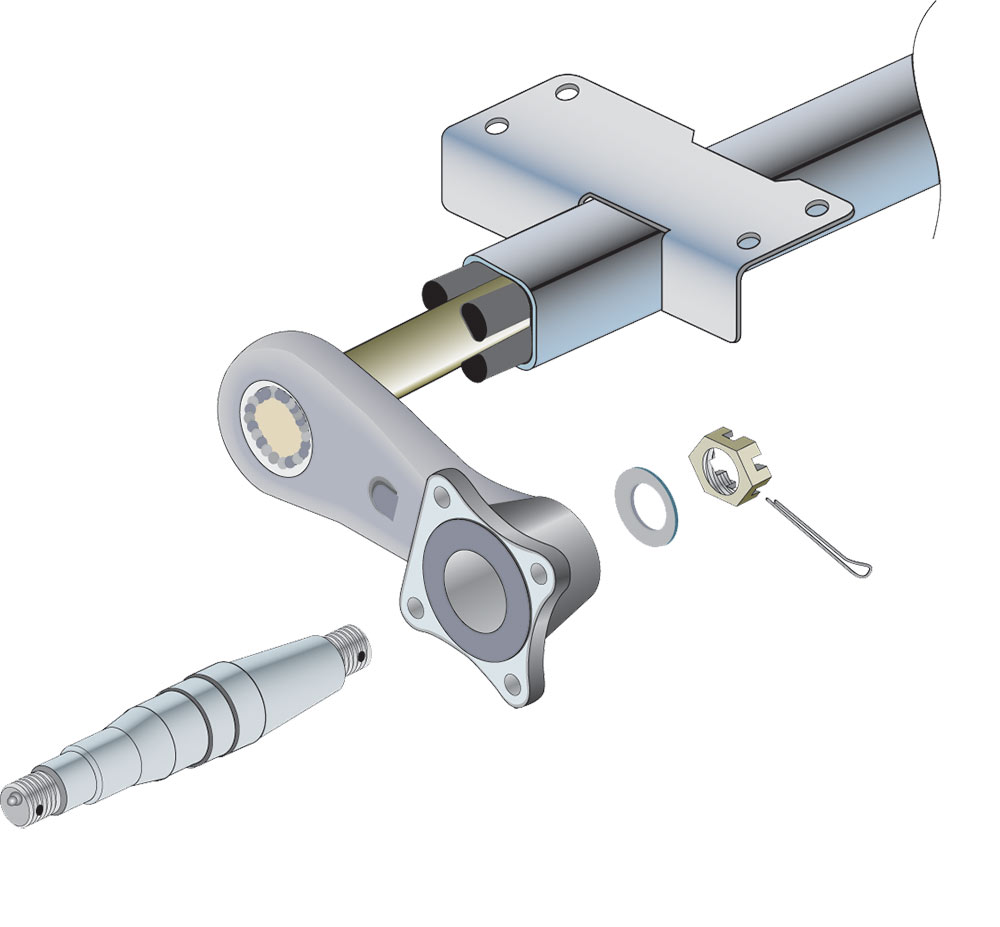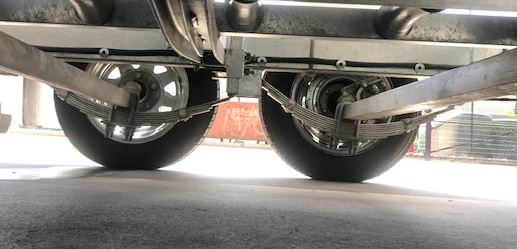What are the benefits of a Torsion Axle compared with normal leaf springs?
Many clients are interested in torsion axles but still have a lot of questions about them. So we’d like to provide clarity about torsion axles compared to leaf spring suspensions to help our fellow boaties choose more wisely when looking at purchasing their new boat trailer.
Firstly what are these two types of ‘suspension’?
While there are a number of variations…a leaf spring carries the movement between an oscillating trailer axle and the trailer chassis. The result is that the trailer chassis alone has to carry and stabilize the total load weight and its traveling and swaying momentum, independently of the axles.
A leaf spring system, therefore, provides a comfortable ride for the load but subjects the chassis to peak bending stresses and fatigue. Boat trailers usually carry a load that is at the upper limit of the design carrying capacity. This exacerbates fatigue of the chassis, causing hairline cracks, and fast-tracking corrosion…especially if the trailer chassis is a steel/galvanised construction.
A torsion system consists of a steel torsion bar connected to a wheel stub axle via a lever. The torsion bar is restrained by synthetic rubber cores inside a steel square tube axle directly fastened to the trailer chassis. Oscillation of the wheel on account of the road surface and weight bearing of the trailer load results in the torsional movement of the bar. This movement is resisted and cushioned by synthetic rubber cores. It’s these synthetic rubber cores that provide the interface between the moving trailer wheel and the square tubing of the axle which is fixed to the trailer chassis.
The benefit is that the trailer chassis and the trailer axle is one structurally integrated item with a low profile, transferring no stress to the chassis during operation. The wheel is able to oscillate and respond to road conditions without transferring this to the axle and carried load. A comfortable and stable ride occurs with minimal induced stress and safer and better distribution of travel momentum, sway, etc.

Historically torsion axles were first introduced around 90 years ago and have evolved significantly since then. While the concept was forward thinking, materials and design technologies were limited at the time and this led to early failures and exacerbated a bad reputation. Failures however are a natural part of any development process and these problems have been fully resolved.
a. Natural Rubber was used initially – and as it perished, it caused a breakdown of the dampers used for ‘suspension’.
b. When the rubber perished, the arm could rotate feely, effectively collapsing the wheel on that end of the stub shaft – thereby rendering the vehicle un-moveable.
The German founder of AL-KO solved the problems caused by perished rubber by designing and patenting a 5-sided (polygon) outer axle. When the rubber failed then the inner torsion bar could no longer rotate 180 degrees and jam… but instead was limited to about 30
degrees rotation. This allowed the vehicle to be moved to the nearest repair centre… albeit a hard rough ride…but at least it was movable. Limiting rotation on failure of the rubber was the key design innovation leading to the success of AL-KO – which is today one of the world’s largest torsion axle makers.

Today, natural rubber is no longer used – the problem having long-since been remedied by development synthetic rubber materials technologies which do not perish. Synthetic rubbers are widely and successfully used and are resistant to oils, acids, and other deterioration. They usually come with a life time warranty by most axle makers. In fact the failure of a modern torsion axle is unheard of and AL-KO has made around 50 million torsion axles over the years. Trailer manufacturers such as Spitfire have installed thousands of these axles and never seen a failure.
Interest in torsion axles has also been revived by recreational off-road campers and caravans for their durability, reliability, and safer more ‘gentle’ independent ride – and contribution to the structural integrity of the trailer chassis.
Which is better for my boat trailer?
A conventional leaf-sprung boat trailer has the boat sitting on the chassis, suspended above the springs, with the springs ‘suspending’ the chassis above the axle… in ‘suspension’. The freedom of the chassis and total load to sway with every bump and wind shear causes instability, induces high flexing forces, and exacerbate stress into the chassis. It was a good idea for the stage coaches around the 1850s and it still persists today in many vehicles… but is it the best? No way!

By comparison, the torsion axle contributes to the integrity of the chassis by being a structural part of the chassis, while also lowering the center of gravity directly onto the axles – as opposed to suspending the chassis above the axles. Trailer designs that additionally use the torsion axle as a cross member enjoy the best advantages of a torsion axle by reducing trailer weight and height… while also enhancing the structural integrity of the chassis. Instead of the trailer carrying the weight above the springs…the torsion axles carry the weight as low as possible, while the chassis merely provides the connection between the axles and the tow vehicle. This significantly improves towing/weight dynamics providing a much more stable ride and major safety and towing benefits to boat owners. The lower profile system also benefits boat launching and retrieval.
In summary… when evaluating what is best for you… consider the following;
Torsion Axles, although more expensive than leaf springs, are dependable, quiet, lighter, and provide a smoother and safer ride. There is no metal-to-metal contact, and nor is the trailer chassis subjected to road stress. Torsion axles are also maintenance-free.
With today’s synthetic materials and advanced engineering, torsion axles are emerging into high-end trailers and off-road caravans for many of the reasons outlined above – and are now proven to last a very long time.
Leaf springs have even weight distribution and can achieve more even tire wear for multi-axle trailers when using load-sharing equalizers, but the flip side is the extra stress and fatigue that is borne by the chassis. They are more affordable up-front and are durable with regular maintenance and care. Repairs are relatively inexpensive but will need to be undertaken periodically. Their more bouncy ride on uneven or rough roads and their metal-on-metal fastening to the axles typically leads to faster wear and tear, and indeed a shorter life.
The choice is yours … but we believe, based on our experience and research, that the future of Boat Trailer design is well and truly tied to the advantages of torsion axles.




















